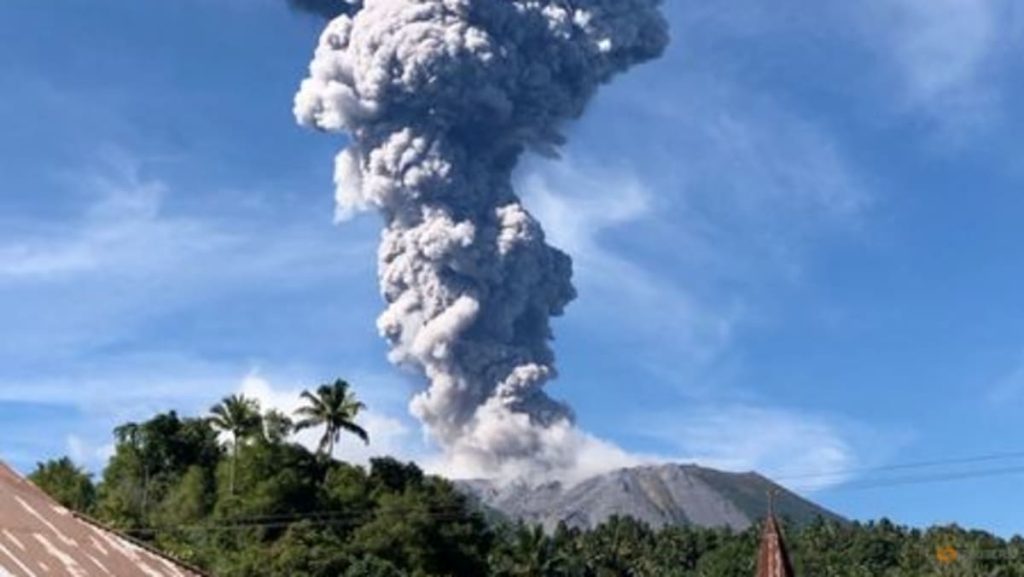The alert level of the Ibu volcano in Indonesia was raised to the highest level by the country’s volcanology agency after recording six eruptions since the weekend. Located on the remote island of Halhamera, the volcano has been spewing thick columns of grey ash several kilometers into the sky. This increased activity has been ongoing since April, with the most recent eruptions occurring starting on May 11. Residents within a 4km radius have been warned to stay away from the volcano, with the recommendation to wear masks and goggles in case of an ash outpouring.
Indonesia’s disaster mitigation agency did not immediately respond to inquiries about evacuation plans for the area around the Ibu volcano. However, the volcanic activity at Ibu is part of a larger trend of eruptions across Indonesia, which sits on the Pacific “Ring of Fire” and is home to 127 active volcanoes. In West Sumatra province, Mount Marapi has experienced flash floods and cold lava flows, leading to the deaths of at least 67 people with 20 individuals still missing following heavy rain on May 11. Additionally, the Ruang volcano in North Sulawesi has erupted recently, prompting the evacuation of over 12,000 people on a neighboring island.
The eruption of the Ibu volcano is just one in a series of volcanic events that have occurred recently in Indonesia, leading to concerns about the safety of nearby residents. With the increase in volcanic activity across the country, authorities are working to assess the potential risks and ensure the safety of those living in affected areas. The eruption of Ibu and other volcanoes in Indonesia highlights the need for continued monitoring and preparedness for natural disasters in the region.
The ongoing eruptions at Indonesia’s Ibu volcano have raised alarm among officials and residents living in close proximity to the volcano. The escalation to the highest alert level signifies the potential for further explosive activity and poses a threat to local communities. As the volcano continues to erupt and spew ash into the sky, the risk of ashfall and other hazards grows, necessitating precautions such as wearing masks and goggles to protect against respiratory issues and eye irritation caused by volcanic ash.
In response to the heightened volcanic activity at Ibu, Indonesia’s disaster mitigation agency is likely to implement evacuation plans and other safety measures to protect residents in the surrounding areas. With the recent eruptions at multiple volcanoes in Indonesia, the government faces a significant challenge in managing the risks posed by ongoing volcanic activity. As efforts are made to monitor the situation and provide support to affected communities, the need for preparedness and effective response strategies is apparent in mitigating the impact of natural disasters like volcanic eruptions in Indonesia.
The eruption of the Ibu volcano and other volcanic events in Indonesia serve as a reminder of the country’s vulnerability to natural disasters, given its location along the Pacific “Ring of Fire.” With a large number of active volcanoes in the region, Indonesia faces ongoing threats from volcanic eruptions, earthquakes, and other geological hazards. The recent eruptions at Ibu and other volcanoes highlight the importance of proactive measures to protect communities and ensure their safety in the face of natural disasters. As Indonesia continues to grapple with the impacts of volcanic activity, efforts to enhance monitoring, preparedness, and response capabilities are crucial in safeguarding lives and property in at-risk areas.


